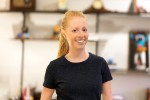
The better the question
Can improved efficiency empower your front office?
Following a merger, our client wanted to ensure its front-office processes were optimized for growth
A leading global asset manager invited us to discuss how it could streamline its front-office capabilities to help the business better position itself for the future.
The company was formed through the complex merger of four separate asset management entities and had made good progress in bringing the organizations together. However, efficiency was being hampered by the existence of duplicative teams, multiple legacy systems and increasingly outdated technology in the front office.
Over the past decade, we have assisted many asset managers with the process of back-office transformation. Recently, however, the front office has become a target for transformation in order to make efficiency gains and generate alpha. Many technology vendors have realized this and enhanced their offerings to develop a front-to-back solution. We are ideally placed to help clients explore these possibilities.
Our client wanted to evaluate potential new technology platforms and gain a deeper understanding of how its capabilities compared with industry peers. “The firm came to us with a sense of where they were falling short and our research validated their hypotheses,” explains Cheryl Boyd, EY Wealth & Asset Management Americas Consulting Senior Manager. “We had an existing relationship with their executive team, so they trusted us to help them determine what they needed to do to succeed.”

The better the answer
Using design thinking to expand the company’s mindset
EY’s incubator lifted constraints and sparked excitement about what was possible.
Following an initial conversation, we began helping the company explore ways to meet its objectives, gain a full view of market positioning, and develop a business case and roadmap for a strategic front-office transformation.
Our first step was to assemble the right team, comprised of experts in asset management front-office technology, process improvement, design thinking, and digital solutions. We hosted working sessions with the client at our Charlotte wavespace location to brainstorm ideas about where the company wanted to be in three to five years’ time, considering the market trends and technology landscape. No idea was off limits. Only then was the question asked about how to get there.
Using the Charlotte EY wavespace was especially helpful in fostering a more innovative, interactive, and energetic environment. It also helped us in applying disruptive thinking methodologies, which is about identifying solutions without constraints, although always well-grounded in the company’s strategic objectives.
To do this we used small group break-outs, rapid iteration, prototyping and testing of ideas, and a “fail fast, realize value fast” approach.
“It’s a totally different experience than just having a meeting in a conference room,” says Boyd. “The wavespace environment helps us and our clients think outside of the box, and we often achieve breakthroughs in tackling their biggest challenges.”
Boyd says participants found the experience a little uncomfortable at first, because it can be hard to stay open minded, rather than immediately criticizing an idea. But once they grew used to the process they found it exciting. The added benefit is that, when people feel they have had a hand in developing new ideas, they are more willing to go through the challenging process of implementation.
Alongside this conceptual work, we also conducted wide-ranging research. We evaluated 39 front-office capabilities in line with the firm’s investment strategy and consulted more than 80 employees across the Americas and EMEIA to gain rich insights on processes and pain points.
We conducted industry research and analysis that compared the company to its peers across a wide range of metrics including profitability, headcount to assets under management, and revenue by asset and client type. We also provided a market scan of existing and emerging technology platform vendors for various functions including research, portfolio management, order management and trade execution.

The better the world works
Preparing to unlock front-office potential
The business is now well placed to gain competitive advantage and improve margins.
By the end of the project, the business gained important insights, and our design-thinking approach helped to dismantle some limiting assumptions.
For example, five different technologies were being used for order management, depending on geography and asset class. We found that most people had an underlying assumption that the goal was to get to one platform, which would prove challenging across their complex asset classes and resulted in low buy-in to pursue the initiative at all. We helped them define the business outcome that they sought to achieve, which was using tools that were fit for purpose consistently across the organization. “Once we broke this assumption everyone could see that the true goal could still be achieved even with two platforms,” says Boyd. “It changed a lot of people’s mindsets.”
Gaining a full picture of the market and where the company ranked compared to peers was also enlightening. The leadership team gained validation of what they were feeling: they were not the only firm concerned about fee pressure and tight margins. This wider perspective equips them to make more balanced decisions in future.
We left the client with a presentation of more than 120 detailed, digitally enabled recommendations, organized around four central themes:
- The centralization of key functions: What are the operational and people changes required across the business lines?
- System consolidation: What platforms and applications do we want to use, and how do we transition from homegrown systems to best-of-breed vendor solutions?
- Data management: How can we ensure data is captured in one rationalized source and used consistently?
- Data accessibility: How can we make sure data is provided in the right place, time and format to support informed decision-making?
The business is now able to plan its next steps, and has a clear path forward to evolve into a successful asset manager of the future.
Why EY?
The client chose us because we were willing to engage in a collaborative process of discovery as opposed to coming in armed with all the answers. We know that to deliver valuable answers to the toughest questions, we must work in partnership with our clients, building a long-term relationship and a deep understanding of the issues they face.



